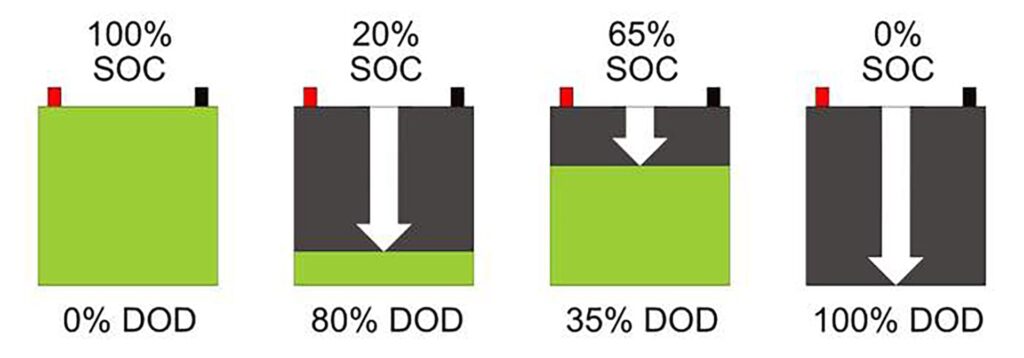The effective use of solar energy storage systems depends on their longevity and efficiency, both technically and economically. The lifetime, charge/discharge cycle, storage efficiency and recycling processes of battery energy storage systems (BESS) are among the factors that directly affect the sustainability of renewable energy systems. In this paper, battery lifetime, efficiency optimization and recycling processes will be discussed.
Battery Life and Aging Factors
Battery life is usually determined by charge/discharge cycles and depends on the following factors:
- Depth of Discharge (DoD): Deeper discharges increase the aging rate of the battery.
- Temperature Conditions: High temperature accelerates electrochemical reactions and can cause battery degradation.
- Charge/Discharge Rates: Rapid charging or discharging can cause battery components to wear out quickly.
Efficiency Improvement Methods in Storage Systems
The following strategies can be used for maximum efficiency of battery systems:
- SoC Optimization: Long life can be achieved by keeping the batteries within a certain charge range.
- Hybrid Storage Systems: A combination of different battery technologies can increase efficiency.
- Intelligent Management Systems: Algorithms that optimize battery life using EMS and BMS can be implemented.
End-of-Life Management and Battery Recycling
When batteries reach the end of their life, two basic strategies can be followed:
- Secondary Use (Second Life Applications): Batteries from electric vehicles can be reused for energy storage.
- Recycling and Disposal: Precious metals (lithium, cobalt, nickel) in the battery should be recycled in specialized facilities for recovery.
Environmental Impacts and Sustainability Guidelines according to IEC TS 62933-4-1
The IEC TS 62933-4-1 standard provides some recommendations for reducing the environmental impact of energy storage systems:
- Implementation of battery recycling programs,
- Use of materials that leave a low carbon footprint,
- Prefer battery technologies with high recycling rates.
Economic Analysis: Levelized Cost of Storage (LCOS) and Return on Investment
You can measure the economic efficiency of energy storage systems with the Levelized Cost of Storage (LCOS). In the LCOS calculation, you should consider the following factors:
- Battery investment cost,
- Operation and maintenance expenses,
- Cost per energy cycle.
Conclusion
Efficiency, long life and sustainable recycling practices in solar energy storage systems are critical for the future of renewable energy systems. IEC standards and smart management strategies ensure optimal utilization of battery systems both economically and environmentally.
If you need engineering for your storage solar power plants, you can contact us at [email protected].
